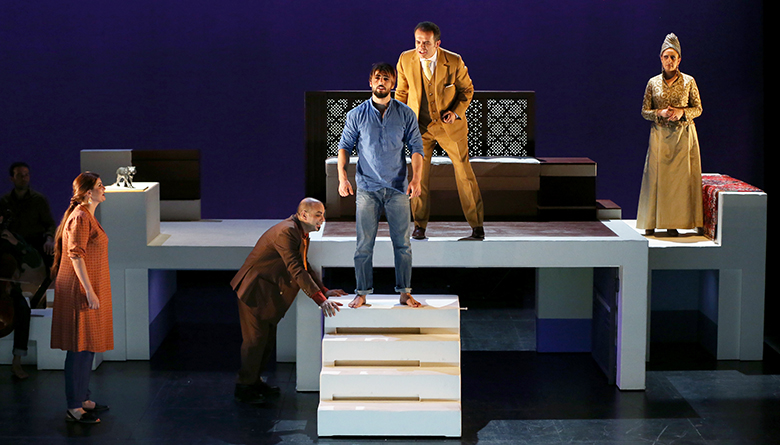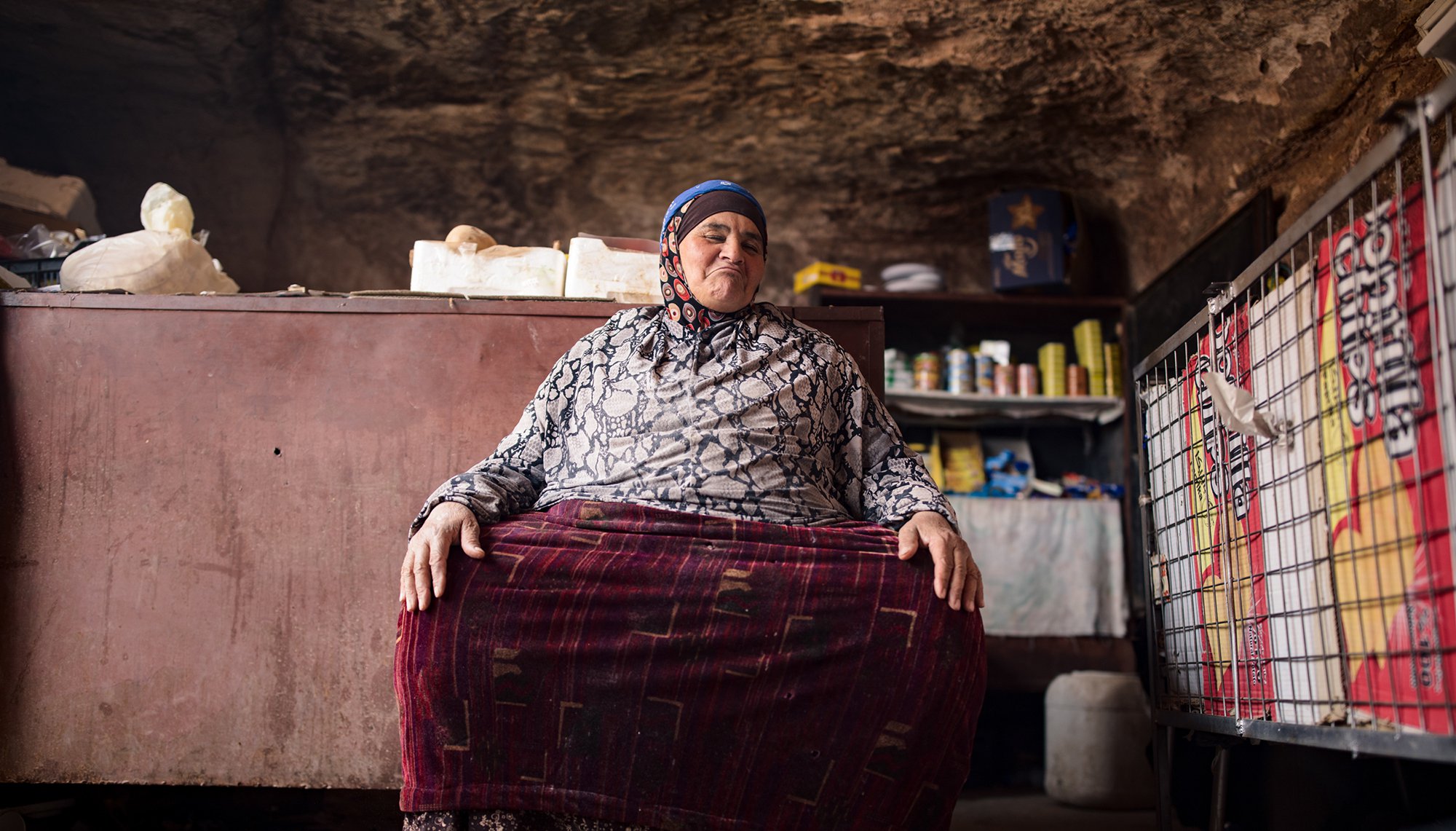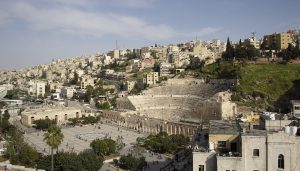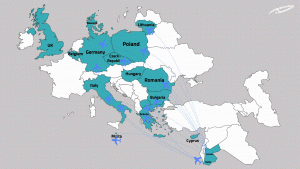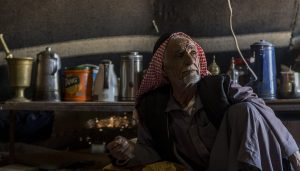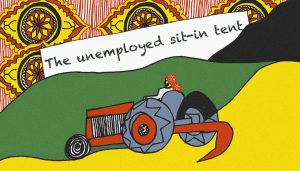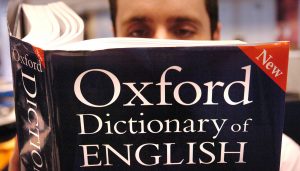By Yazan Loujami
Recently, Kalila and Dimna was staged at the prestigious Aix-en-Provence festival, and praised by the French press as the “first Arabic opera”. This makes it perhaps the fifth first Arabic opera, and calls for an urgent retrospection to establish a more proper context, and to gather the fragmented incidents that shape the long and unimpressive history of Arabic Opera.
I won’t be using the term ‘opera’ to imply the mere vocal technique of lyric singing (as some misconceptions tend to confuse), but rather to describe a sociocultural phenomenon incorporating literature, performing arts, design, and music, which acts as the main axis.
It also seems worthwhile to briefly attempt to define contemporary opera, since today, opera is no longer an 18th century European monopoly. It can be written in any language, scored for any ensemble from colossal orchestras to a couple of synthesizers, and staged anywhere from conventional theatres to train stations.
A well-written contemporary opera however, differs from other forms of musical theatre – even though borders aren’t always clear – mainly through the liberation of its musical language from any local molds in pursuit of a complex individualized sonority that comes from the composer’s own world, and not from an inherited collective practice (such as Anglophonic musical, Japanese Kabuki, or even traditional opera, etc..). This implies a libretto with minimum literary value, and a general concept aiming toward a certain intellectual and aesthetic statement.
Opera in the Arab world
Unsurprisingly, the story takes off with an opera neither written nor produced by Arabs; Verdi’s Aida gains a peculiar importance among orientalist operas for being the first one commissioned by an Arab state, more specifically by Ismaïl Pacha, Khedive of Egypt. The 1871 premiere took place at the Khedival opera house, which was a symbol of Cairo’s political and cultural westernization.
In his book Culture and Imperialism, Edward Said argues that Aida established the relation between opera and the Arab world as one of domination and power for a set of reasons, mainly that Aida –regardless of its acknowledged musical value- reflects in reality the political and artistic situation of Italy, and doesn’t care to address the Egyptian audience or to take it seriously, and that it was superficially coated with a fake orientalist grandiosity for the mere necessity of the occasion.
In the Levant, the term « opera » entered daily urban life in the 1920s, through radios and theatres like the Abbasia Opera House in Damascus or Martyrs’ Square Opera House in Beirut. But the reality was that the repertoires played in these venues had little to do with opera.
In 2004, Al-Assad House for Culture and Arts was inaugurated in Damascus, becoming the third Arabic opera house after the Khedival and the Alexandria Opera House. It was followed by the Royal Opera House in Muscat 2011, and the Algiers Opera House last month, while projects like F.L.Wright’s Baghdad Opera, and the Jordanian King Abdullah II House of Culture and Art remained unrealized.
Aside from technical disparities, the main difference between Arab opera houses and their international counterparts remains (as foretold by their names) the weakness of their civic role. At least since the mid-19th century, European opera houses offered a relatively free space of experimentation, critique, and interaction with society, even triggering a revolution and creating a new state on the map in the Belgian case. They are therefore living stages, not museums to showcase archaic artifacts, or to channel governmental discourses.
Nevertheless, locally-casted operas were valuable contributions to the Arab world, such as Lehar’s Merry Widow (Cairo – 1961), and Purcell’s Didon and Aeneas (Damascus – 1995), and other similar projects that left a positive impact despite the occasional lack of historic interpretation, and the neglect of visual and theatrical aspects. As for the Gulf states, they went directly to commissioning their own operas from abroad, such as Ibn Sina (2013), premiered in Qatar by a foreign cast.
Opera by Arabs
The importation launched by Aida was in fact a two-way phenomenon. In 1910, Paris-based Lebanese author Chekri Ganem wrote Antar, a theatre play finding in the classic tale of Antara ibn Shaddad a metaphor for the rising Pan-Arabism and its anti-Ottoman struggle. The play was a success at the Parisian Odeon theatre, and was adapted into an opera by composer Gabriel Dupont in 1914, thus becoming one of the first operas written by Arabs, if not the first. Despite its typical French sound, Antar acts as a meeting point between European Romantic nationalism, and the Arabic Nahda influenced by it.
Similar works followed, such as K.Saariaho’s L’amour de Loin (2000) on a libretto of Amin Malouf, reflecting, like many of his works, on the theme of the Levant’s relationship with the West, and Cities of Salt (2015) in which Syrian composer Zaid Jabri revisits Abdul Rahman Munif’s iconic 1984 novel.
None of these operas were written in Arabic nor did they target an Arab audience, yet they remain the most successful in depicting the Arab world beyond stereotypes, and interacting with the musical profile of their ages (Impressionism in the case of Dupont, and Spectralism in the case of Saariaho).
Opera in Arabic
Attempts to musically set Arabic texts outside the context of long-established traditions date back to missionary activity during the turn of the 20th century. This was again a relation of domination that gave birth to religious works like those of Lebanese composer Wadih Sabra, often labeled as operas although they probably resembled oratorios or liturgical plays.
At least since the 1960s, serious Egyptian attempts pioneered translation of European operatic heritage to Arabic. However, results weren’t convincing.
Classical composers such as Solhi Al-Wadi saw «difficulties in solving the problem of some phonetics and letters that are difficult to musically treat (…) and the composer has to find the proper way to deal with them ». This “proper way”, however, cannot evolve in a vacuum. Historically, librettos were set to music using different methods, like prioritizing melodic lyricism (romantic opera), prioritizing ornamental virtuosity (coloratura), deriving from theatrical declamation (Schoenberg’s Sprechgesang), from natural speech rhythm (Janáček), or artificially chopping phrases to fit a strict musical ideology (some modernists and minimalists). Therefore, the “language crisis” is often used by Arab composers to mask their indifference toward studying past experiments, and taking conscious positions towards them. They blame the Arabic language but they are simply not to break the inherited rules and mechanisms of setting it to music.
Some have attempted, like Egyptian composer Aziz Al-Shawan’s operas Antara (1947), and the recent Lebanese opera Antara and Abla (again). Both operas ruminate Ganem’s plot, which in its turn repeats Al-Qabbani’s 19th century musical play, probably without any of them knowing about the other, making things even worse, and exposing the Arab mentality’s insistence on repeating itself over the span of two centuries. Both works adopt a musical language not very far from Aida’s, which became along with similar orientalist works, a prototype Arab composers keep reproducing whenever they try to speak in an international tone.
Symptoms of floundering
It’s obvious by now that Kalila and Dimna doesn’t build up on the mentioned context, belonging instead to another one far from Arab (or any other) opera; that of purely oriental music, and traditional children’s theatre rooted back in forms like shadow plays and the Hakawati. The work is scored for a small folk ensemble (takht) that accompanies a combination of Mawawil and Andalusian melodies without any mentionable harmony or orchestration. Ibn Al-Muqaffa’s medieval text is treated in local Levantine dialect using the same conventional mechanisms practiced by Arabic music for centuries.
Introducing Kalila as an opera to an audience that knows very well how to tell the difference between opera and folk theatre made it look naïve compared to other contemporary operas normally staged at Aix. While such festivals expect contemporary commissions to adhere to a strict criteria of cutting edge compositional and aesthetic techniques, they expect the exact opposite from oriental work: to maintain its orientalism and traditionalism, and stick to stereotypes that freeze the Arab past in sterile molds incapable of interacting with the present.
The problem then doesn’t lie in the work per se, nor in a genuine desire to celebrate our traditional music, but rather in the Arab classical composer’s consent with his ‘orientality’ becoming his main purpose, and a means of presenting himself in an abusive context where he doesn’t belong. This testifies to our chronic failure to measure up to our international counterpart, thus playing the orient card to escape into our comfort zone, and fulfill at the same time western fantasies of what Arabic music “ought to be”.
This why we are not creating a real Arab Opera that can be a serious tool in addressing Arab reality. This is also why the Arab audience today is no more concerned with opera than Egyptians were with Aida. Despite great efforts and intentions, most Arab operas are born petrified museum objects, and a commodity to be consumed either by a socio-political system showcasing its power (gulf states), or by an institution exhibiting its cabinet of curiosities (Aix). As for their composers, they remain trapped in a spatiotemporal gap of oblivion, incapable of assimilating any musical evolution since Wagner, or literary one since the Nahda.
Furthermore, Arab operas remain isolated from each other, and from the international scene, which explains the constant claim of «the first Arabic opera», as if the crying need for acquiring the title’s benefits is more relevant than what the work itself has to say. But Arabic librettos and casts don’t earn the title when they continue to depict the Arab being more like a circus character than a contemporary being who deserves a work of theater he or she can identify with.
Between forcing western labels on oriental works, forcing orientalist appearances on western ones, and clinging to clichés for fear of floundering between the two, there has to be a middle ground where a true local operatic movement could grow. This movement cannot be nominally imposed from above, it can only come as an accumulation of intellectual and cultural infrastructures that have matured to a level where finding new forms of self-expression becomes a necessity.
This cannot happen in the absence of common interactive platforms on the Arab level, and an Arab contemporary music movement, with composers unaware of the impossibility of building this movement in isolation from other art forms and thought schools, with cultural institutions and intellectuals still considering music a tool of entertainment or at best, of propaganda, and classical music as an obscure elitist genre. And foremost, with the absence of a free civil atmosphere that encourages experimentation and openness.
